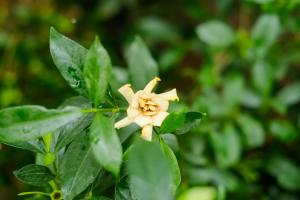A Life Cycle of a Bean Plant
Bean plants, like most plants, have a life cycle that is characterized by distinct stages of growth and development. Understanding the life cycle of a bean plant can help us better appreciate the complexities of nature and the intricacies of plant biology. In this article, we will explore the different stages of a bean plant's life cycle.
Stage 1: Seed Germination
The first stage of a bean plant's life cycle is seed germination. This is when the seed begins to sprout and grow into a new plant. The seed contains all the necessary nutrients and genetic information to start the new plant. Once the seed is planted in soil, it begins to absorb water, which triggers the process of germination.
The first visible sign of germination is the emergence of a small shoot from the seed. This shoot then grows into the stem of the plant. At this stage, the bean plant is still underground and is not visible to the naked eye.
Stage 2: Vegetative Growth
Once the shoot has emerged from the seed, the bean plant enters the vegetative growth stage. This is when the plant begins to grow leaves and develop a root system. The leaves serve as the primary site for photosynthesis, where the plant converts sunlight and carbon dioxide into energy.
During the vegetative growth stage, the bean plant also begins to develop a root system, which serves to anchor the plant in the soil and absorb water and nutrients from the surrounding environment. As the root system grows, the plant becomes more established in the soil and is able to survive and thrive.
Stage 3: Reproductive Growth
After the bean plant has reached maturity during the vegetative growth stage, it enters the reproductive growth stage. This is when the plant begins to produce flowers and eventually, beans.
Bean plants are unique in that they produce both male and female flowers on the same plant. The male flowers produce pollen, which fertilizes the female flowers. Once the female flowers have been fertilized, they start to develop into beans.
Stage 4: Seed Production
During the seed production stage, the bean plant focuses its energy on producing and ripening the beans. The beans are the plant's way of reproducing and perpetuating its species. Once the beans are fully ripe, they can be harvested and used for food or be allowed to dry for future planting.
After the bean plant has completed its life cycle, it will eventually die and decompose back into the soil, providing nutrients for future plants to grow.
Conclusion
The life cycle of a bean plant is a fascinating process that is essential to the survival and growth of the plant. From seed germination to seed production, the plant goes through a series of distinct stages, each with its own unique characteristics and requirements. By understanding the life cycle of a bean plant, we can gain a better appreciation of the complex and interconnected systems of nature.

 how many times do yo...
how many times do yo... how many planted tre...
how many planted tre... how many pine trees ...
how many pine trees ... how many pecan trees...
how many pecan trees... how many plants comp...
how many plants comp... how many plants can ...
how many plants can ... how many plants and ...
how many plants and ... how many pepper plan...
how many pepper plan...































